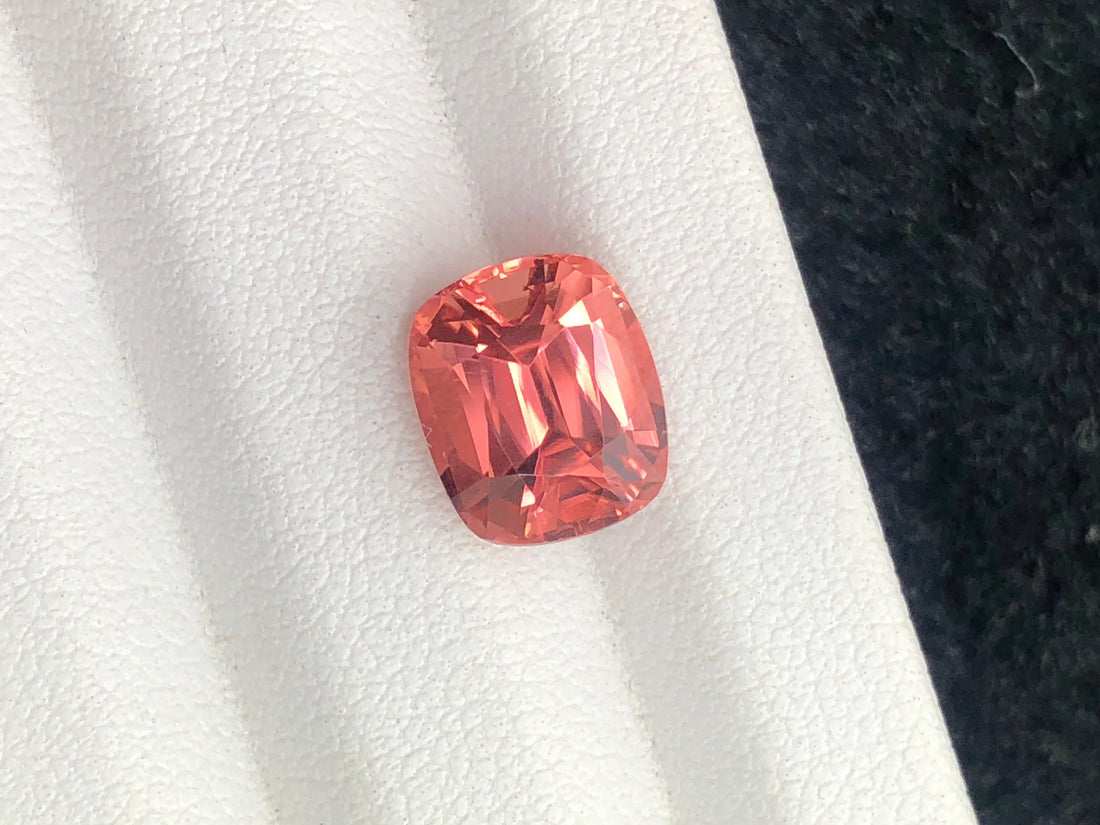
Jewellery Is Art, Not Accessory: Designing with Afghan Tourmaline in an Age of Meaning
Share
There was a time when jewellery served as decoration. That time is over.
In 2025, jewellery is no longer a quiet complement to clothing — it is a statement, an argument, sometimes even an act of resistance. The pieces that matter today are not mass-produced, soulless items boxed in velvet. They are artifacts. Sculptures. Symbols. And they begin not in the atelier, but in the earth.
At Lisbon Gem Exchange, we are not interested in selling gemstones as fashion. We are interested in offering materials for expression. And few materials are as expressive, as raw, and as ethically potent as the Afghan tourmaline.
A Design Revolution in Progress
The global jewellery landscape is changing. The aesthetic of excess is giving way to something slower, deeper — and far more powerful.
According to InStyle, 2025 will be defined by jewellery that makes bold, personal statements. Oversized rings, asymmetrical earrings, and conceptually driven pendants are becoming staples of the new high jewellery. Glamour refers to this shift as “wearable sculpture” — pieces designed not to match an outfit, but to provoke thought and stir emotion.
This is not a passing trend. It reflects a deeper shift in how we engage with materials and meaning. In this context, Afghan tourmalines offer something extraordinary: a gem that does not submit to design, but collaborates with it.
Afghan Tourmaline: A Gemstone with a Story That Matters
Afghan tourmaline is not just beautiful — it is grounded. Mined in the austere and mineral-rich highlands of Nuristan and Kunar, these stones are the geological children of a place where time moves differently and nothing is easily won. Extraction is still manual, still intimate. It happens with hands, not machines; with knowledge inherited, not engineered.
The result is a gemstone that carries its place of origin like a pulse. Each tourmaline reflects the complexity of its birth: fractured topographies, fluctuating climates, human persistence. It is a stone with shadows and light. One that does not hide its imperfections, but uses them to speak more clearly.
At Lisbon Gem Exchange, we honour this origin. Our gems are not chosen for uniformity — they are chosen for character. For the chromatic tension in a bicolour crystal, for the unexpected clarity in a mint-green shard, for the weight of history in a piece of pink rubellite.
They are stones with stories. And that matters.
Jewellery as Sculpture, Not Ornament
In a world obsessed with smooth edges and calibrated sparkle, Afghan tourmaline feels almost rebellious. Its rawness, its variation, its refusal to be domesticated into standard shapes — all of this invites a different kind of design.
These are gems that provoke the imagination.
They call for irregular settings. They suit sculptural forms. They thrive in asymmetry. In this, they align perfectly with the 2025 design ethos, where jewellery is created not just to match skin or fabric, but to mirror the inner life of its wearer — their contradictions, their journey, their becoming.
At Lisbon Gem Exchange, we have seen our stones become the centrepieces of statement rings that suggest landscape, earrings that echo architecture, pendants that behave like miniature altarpieces. We provide not materials for commerce, but materials for composition.
Ethics Is Not a Trend — It’s the Foundation
It is tempting, in an industry built on sparkle, to turn ethics into branding. But at LGE, ethics is not aesthetic — it is infrastructure.
We work only with trusted partners in Afghanistan — small-scale miners, often working in cooperatives, whose lives depend directly on the stones they bring to light. We do not operate through layers of opacity. We do not tolerate the exploitation that still permeates too much of the gemstone trade.
We are not perfect — and we do not pretend to be. We are, however, committed. Committed to knowing where our gems come from. Committed to the humans behind them. Committed to transparency in a sector that too often avoids it.
Our stones are not certified by corporate labs. But they are traceable, and they are true. And in 2025, for an increasingly conscious market, that truth is more valuable than ever.
The Lisbon Gem Exchange Difference
What makes Lisbon Gem Exchange different is not volume. It’s vision.
We do not flood the market. We curate. We select. We say no more than we say yes. Because we believe that the right stone can change a design — and that the right design can change the way we understand jewellery altogether.
We serve designers, collectors, and dreamers — people who know that beauty is not polished to perfection, but found in what resists polish.
Each gem we offer is an invitation: not just to make a piece of jewellery, but to create a piece of art. A sculpture to be worn. A memory made solid. A story set in stone.
Final Thought: Make It Matter
In the age of silent luxury and conscious materials, the real jewels are not the ones that shout. They’re the ones that speak quietly, but deeply.
Afghan tourmaline does not ask to be adorned. It asks to be understood. It asks to be framed, elevated, respected.
And at Lisbon Gem Exchange, that’s what we offer: not just rare stones, but the chance to create something unforgettable with them.



